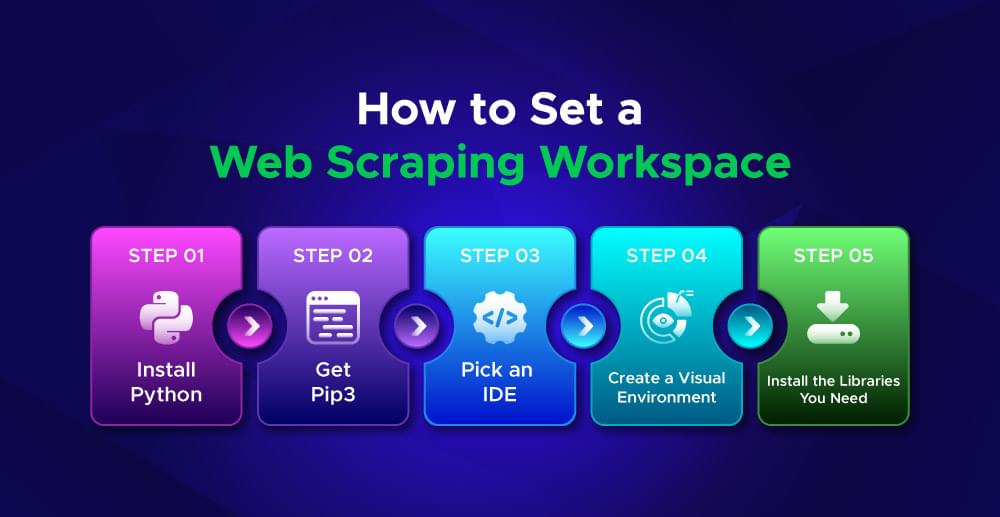In our digital world, getting hold of the correct contact details can make a big difference for your company. If you want to grow your connections, get in touch with possible customers, or do market studies, learning how to scrape emails from websites can give you a leg up. This handy method lets you collect valuable information, which opens doors to new chances for growth and getting your message out there.
This guide shows you how to scrape emails from websites. It covers everything from the basics to advanced methods.
What is Email Scraping?
Email scraping is an automated approach to gathering email addresses from various online sources. This involves using specialized software tools called email scrapers to pull out contact information from websites, social media platforms, forums, and other digital spaces. These tools scan web pages to look for patterns that look like email addresses, such as “[email protected],” and put them together into a list.
Benefits of Email Scraping From Websites
Email scraping gives businesses and marketers several plus points:
- Saves time: It makes collecting email addresses automatic, helping you build focused contact lists fast.
- Find leads: You can gather lots of potential client contacts.
- Helps with market research: It gives you useful data to study trends and how consumers act.
- Reaches specific groups: By pulling out relevant info, you can aim your marketing at particular audiences.
Common Use Cases for Scraping Emails from Websites
Email scraping has many uses across different industries:
- Marketing campaigns: Create email lists to target specific groups and send cold emails.
- Lead generation: Find and gather contact details of potential customers.
- Market intelligence: Collect data to examine industry shifts and what competitors are doing.
- Customer engagement: Find mentions of your brand on social media to interact with users.
- Sales acceleration: Streamline the process of discovering and reaching out to prospects freeing up sales teams to focus on selling instead of manual work.
How to Set Up Your Email Scraping Environment
Pick a Programming Language
To begin your email scraping, you need to pick a good programming language. Python is the best option for web scraping because it’s easy to use, flexible, and has lots of helpful libraries. It’s also pretty fast and doesn’t use up too many resources, thanks to its dynamic typing.
Essential Libraries and Tools to Scrape Emails from Websites
After you’ve decided on Python, you’ll need to get some essential libraries to make email scraping easier:
- BeautifulSoup: A great tool to break down HTML and XML documents.
- Requests: The go-to way in Python to send HTTP requests.
- Scrapy: A complete package to build web crawlers.
- Selenium: Comes in handy to scrape emails from websites that change a lot and to mimic how a browser acts.
These libraries give you the tools you need to scrape email addresses from websites.
How to Get your Workspace Ready

To set up your workspace:
- Get Python: Go to the official website, download the newest version, and install it.
- Get pip3: This is the tool that installs packages for Python 3.
- Pick an IDE: Choose a text editor or IDE like Visual Studio Code, PyCharm, or Sublime Text.
- Make a virtual environment: Use the “venv” module to create a separate space for your project.
- Install the libraries you need: Use pip3 to add the necessary libraries to your virtual environment.
Here’s how to install BeautifulSoup:
1 | pip install beautifulsoup4 |
How to Put Email Scraping Methods into Action
To efficiently scrape emails from websites,, you need to mix several methods. Let’s look at the key steps to build an email scraping solution that works.
How to Break Down HTML with BeautifulSoup
BeautifulSoup is a strong Python library to break down HTML content. To use it well:
- Set up BeautifulSoup with pip:
pip install beautifulsoup4 - Bring the library into your script: from
bs4 import BeautifulSoup - Break down the HTML content:
soup = BeautifulSoup(response.text, 'html.parser')
BeautifulSoup makes it easy to search and navigate HTML structures, which is great for pulling out specific elements.
HTTP requests
To get web pages, you need to make HTTP requests. Python’s Requests library works well for this:
- Install Requests:
pip install requests - Import the library:
import requests - Send a GET request:
response = requests.get(url)
This gets the HTML content of the webpage you want, which you can then break down with BeautifulSoup.
How to Scrape Email Addresses with Regex
Regular expressions (regex) are key to finding email patterns in text. Here’s a basic regex pattern to get emails:
1 | import re |
This pattern looks for sequences that match common email structures. You can tweak it more to boost accuracy or handle specific cases.
By combining these methods, you can build a robust email scraping tool. Keep in mind to follow website terms of service and legal issues when you set up your scraper.
Best Practices and Legal Issues of Scraping Emails from Websites
Ethical scraping rules: When you’re scraping emails from websites, it’s key to stick to ethical rules to make sure you’re collecting data. Always honor what website owners want and their rules. Don’t take emails from private places or areas that need passwords, as this is against the law and can get you in big trouble. Instead, look at information that’s out in the open, but keep in mind laws about data privacy.
To keep things ethical:
- Ask for permission when you can
- Use good tools and services for scraping
- Don’t scrape too often to avoid putting too much stress on servers
- Don’t use the emails you get to send spam or lots of unwanted emails
Paying attention to robots.txt: The robots.txt file plays a key role in ethical web scraping. It tells web crawlers which website sections they can crawl. To follow robots.txt rules:
- Get the file by sending an HTTP request to the root domain + “/robots.txt”
- Read and study its contents to grasp crawling rules
- Look for “Disallow” or “Allow” rules for your user agent
- Check for listed crawl-rate limits or visit times
- Make sure your scraping program follows these rules
If you ignore robots.txt, your scraper might get blocked or face legal issues.
Legal implications of email scraping : The law around email scraping isn’t clear-cut. It depends on things like where you get the emails, why you’re scraping them, and what laws apply where you are. In general, it’s okay to scrape email addresses that are out in the open for anyone to see. But you need to think about privacy laws and whether people have said it’s okay to use their emails.
Here are the primary legal things to keep in mind:
- Follow privacy laws like GDPR and the CAN-SPAM Act
- Don’t use scraped emails to send spam or unwanted ads
- Remember that breaking a website’s rules could get you in trouble with the law
- Keep in mind that taking people’s emails without asking might invade their privacy
Scrape Emails From Other Websites with Crawlbase
Email scraping has emerged as a powerful tool to gather valuable contact information efficiently. This guide has explored the fundamentals of email scraping, from setting up the right environment to implementing effective techniques and navigating legal considerations. By leveraging tools like BeautifulSoup and regex patterns, businesses can streamline their data collection processes and open up new avenues for growth and communication through email marketing lists.
Crawlbase enables you to scrape emails from websites with ease. We provide businesses and individuals with innovative web scraping products like Smart AI Proxy, Crawler, and Crawling API. Sign up now to start scraping websites with ease.
FAQs
- Is it legal to scrape emails from websites?
Web scraping isn’t against the law, and many companies use it to collect data to analyze. But in some cases other laws or rules might make web scraping illegal.
- Can ChatGPT be used to scrape email addresses?
ChatGPT can work as an email parser to get email addresses. To use ChatGPT for this, you need to have a paid OpenAI/ChatGPT account because using the app in a Zap costs a small amount for each request.
- Can you scrape data from websites?
Yes, you can scrape data that’s out in the open on websites, but there are some rules to follow. It’s worth pointing out that web scraping isn’t the same as stealing data. In fact, many companies rely on it to run their business.
- How can I use Python to scrape email addresses from a website?
To scrape email addresses from a website with Python, here’s what you need to do:
- Step 1: Get the libraries you need and install them.
- Step 2: Bring in the libraries and start a session.
- Step 3: Grab buttons from the website.
- Step 4: Find and pull out email addresses from the website.
- Step 5: Look at how to use it with an example. Also, you might want to check out the top five Python libraries that are key for web scraping in 2024.










